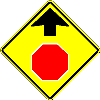Global Navigation

Main Navigation
Sub-Navigation

Content
So what does traction do for us? Why is traction such a concern to us? Because there is a limited amount of traction available to us, we must understand how that traction is used. That's where the ABC's of traction come in. There are three distinct consumers of traction when we ride. Traction is used for Accelerating, Braking and Cornering. In the first article, we said we'd look at each of these individually. This article will explore braking force.
Understanding what traction is and how it is used is the first step towards managing our traction. The challenge is that our available traction comes from the friction between those two little areas of contact where our tires actually meet the road. All of these traction users must vie for their traction needs from the same pool of available traction, namely that generated by those two little contact patches. And any of the three traction users can acquire an appetite that eats up all of our available traction. This is especially true when we are riding under less than desirable conditions like when riding on a wet road surface.
Braking force is somewhat different from the other two traction users because it changes from tire to tire as it is being used. It is also very critical to our riding enjoyment because we use it all the time and we rely on it in tight situations. Braking force is often not fully understood causing some riders misuse their brakes. The result is increased stopping distances and crashes that could have been avoided. Let's look at the dynamics of braking.
Sidebar
Footer
Copyright 1996-2015 Chuck Miles All Rights Reserved
All information on this site, including all articles, are copyrighted materials belonging to Chuck Miles.
Design: Made in Austria | Author: G. Wolfgang



